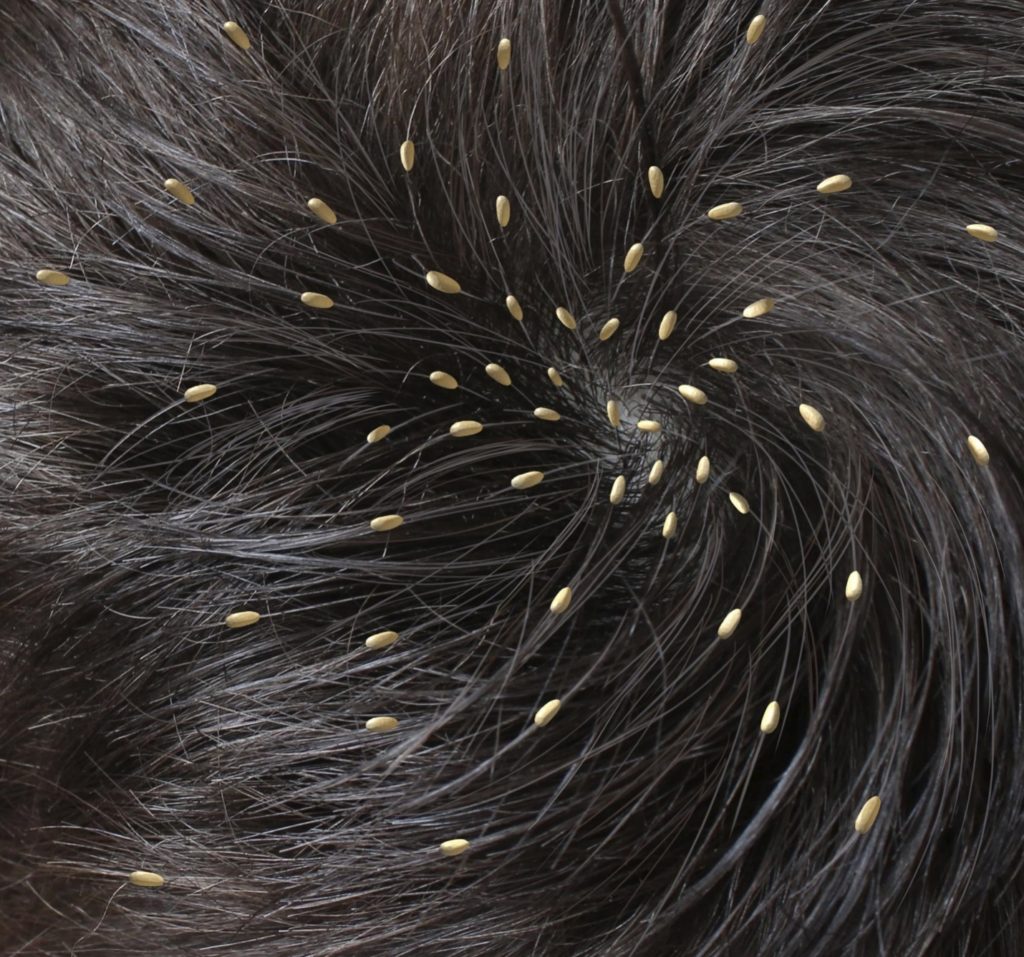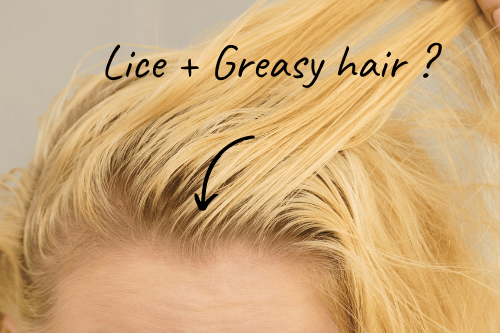Table Of Content
- Children were in Sydney park when man armed with knife chased people, slashed man's neck
- What causes head lice?
- A dermatologist can treat your child safely and effectively
- What to do after treatment
- When should I see my healthcare provider?
- Natural products can give parents false sense of safety
- © 2024 Harvard Health Publishing® of The President and Fellows of Harvard College

Items such as hats, grooming aids, and towels that come in contact with the hair of an infested person should not be shared. Vacuuming furniture and floors can remove an infested person’s hairs that might have viable nits attached. The diagnosis of a head lice infestation is best made by finding a live nymph or adult louse on the scalp or hair of a person. Because nymphs and adult lice are very small, move quickly, and avoid light, they can be difficult to find. Use of a magnifying lens and a fine-toothed comb may be helpful to find live lice. Nits that are attached more than ¼ inch from the base of the hair shaft are almost always dead or already hatched.
Children were in Sydney park when man armed with knife chased people, slashed man's neck
The presence of head lice isn't a reflection of hygiene habits. It's also not a failure on the parent if a child gets head lice. If head lice or nits are found, every member of the family should be checked. It is also important to notify your child’s school, day care or playmates, as anyone who comes in close contact with someone with head lice should be examined. According to studies cited in a 2023 review, in industrialized countries, head lice infestations tend to occur in school-age children, as they often engage in close social contact.

What causes head lice?
Special medicated shampoos that contain a substance called pyrethrins are available to kill lice. If you think you've rid yourself of head lice only to have them return a couple of weeks later, chances are you didn't get every last louse and nit. Following through with treatment, repeating combing, and re-shampooing (per directions) are critical. Combing out the lice is the essential step of any head lice treatment. A special lice comb with narrow teeth can help you remove nits and lice. Between 6 million and 12 million lice infestations occur annually in school-age children in the United States.
A dermatologist can treat your child safely and effectively
Sometimes the itching can lead to excessive scratching that can sometimes increase the chance of a secondary skin infection. People also use a number of home or natural remedies to get rid of head lice. But there is little to no clinical evidence that they're effective. Another common misconception is that head lice can jump or fly from one person to another. Head lice only crawl, most often leading to transmission through direct head-to-head contact. Medications that treat head lice are available over-the-counter (OTC) and by prescription.
What to do after treatment
Many small studies have shown that ingredients in some of these products — mostly plant oils such as coconut, olive, rosemary and tea tree — may work to repel lice. However, these products are classified as "natural," so they aren't regulated by the Food and Drug Administration (FDA). Their safety and effectiveness haven't been tested to FDA standards. Anyone who comes into direct contact with someone with head lice can get them, primarily through head-to-head contact. Fumigation uses toxic chemicals that may cause harm if they breathe it in or their skin absorbs it. However, the CDC notes that they occur less frequently in African Americans compared to other races.
Medieval people were surprisingly clean (apart from the clergy) - Aeon
Medieval people were surprisingly clean (apart from the clergy).
Posted: Tue, 09 Apr 2019 07:00:00 GMT [source]
Since no medication reliably destroys all lice eggs, experts often recommend repeat treatment 7 to 10 days after the first treatment. This article examines who might get head lice, treatment options, and how to prevent head lice. Anyone can get lice — no matter where you live, how old you are, or how often you wash your hair. Since lice feed on blood in your scalp, it doesn’t matter whether your hair is freshly shampooed or not. While you can get head lice at any age, lice do tend to affect children more often than adults.
Natural products can give parents false sense of safety

Anyone who comes in head-to-head contact with someone who already has head lice is at greatest risk. Spread by contact with clothing (such as hats, scarves, coats) or other personal items (such as combs, brushes, or towels) used by an infested person is uncommon. Personal hygiene or cleanliness in the home or school has nothing to do with getting head lice. If a head lice treatment that you can buy without a prescription fails to work, the CDC recommends that you see a health care provider. Highly effective prescription treatments that you apply to the scalp are available.
The charity Community Hygiene Concern has a video about wet combing for head lice. Some treatments need to be repeated after a week to kill any newly hatched lice. Check everyone you live with, or have close contact with, and start treating anyone who has head lice on the same day. After 12 hours, a person can use a very fine comb, known as a nit comb, to remove the dead eggs and lice.
Taking the fight to the lice in West Bridgewater - Enterprise News
Taking the fight to the lice in West Bridgewater.
Posted: Mon, 02 Jan 2017 08:00:00 GMT [source]
© 2024 Harvard Health Publishing® of The President and Fellows of Harvard College
If you use too much, or swallow some by mistake, it may harm your brain or nervous system. The myth that head lice prefer unwashed hair has fueled plenty of stigma. In reality, there’s no link between these tiny parasites and personal hygiene. If these are not effective, a doctor can recommend a prescription medicine instead. Do wet combing on days 1, 5, 9 and 13 to catch any newly hatched head lice. But such policies have several flaws, according to the Centers for Disease Control and Prevention.
You can use over-the-counter (OTC) treatments, prescription treatments, or home remedies to kill and remove head lice. A person should treat head lice with OTC or prescription treatments, which some people call lice shampoo. However, some lice eggs may survive the first treatment application. Doctors often recommend two rounds of treatment to ensure it kills all the lice and their eggs. Some parents turn to home remedies for head lice, such as tea tree oil, mayonnaise, neem oil, vinegar, saline spray and many others.
Washing hats, pillow cases and similar items that touch the head in hot water may help contain head lice. However, disinfecting your house is not necessary because the transmission of head lice from inanimate objects is rare. Head lice are mainly down near the scalp where they feed and lay their eggs. And you cannot put a hair straightener too close to your scalp because you will risk burning yourself. Despite there being products marketed as head lice repellents, Dr Webb says there is little evidence showing that these stop lice from biting or infesting in the first place.
Without a blood meal several times daily, an adult louse will die within a few days. Intense itching on the scalp and neck could indicate the presence of head lice. Sensations of something crawling or moving in the hair also could be a sign of head lice. To determine if head lice are present, look for signs of nits attached to the hair shaft. If it comes off the hair easily, it is most likely not a nit, but dandruff or hair product residue.
Recent reports suggest that taking selfies could help to spread nits around the schoolyard. Here are seven myths about head lice that are completely wrong! That may be partly because misconceptions abound about lice—about how they behave, where they're spread, and how they're best treated. Here, we asked experts to weigh in on four widespread beliefs and the truth behind them. The CDC says there is no need to fumigate your house or treat your pets for lice. Having lice has nothing to do with cleanliness or environment, as they don’t come from the outdoors or your pets.
Before you start treatment, understand how your child could have gotten head lice. Head lice don’t jump, they don’t live on pets and they have nothing to do with personal hygiene. The most common way head lice spread is by head-to-head contact. This means your child must have been touching heads with someone who has head lice. Head lice need to have a blood meal every 12 to 24 hours, so they can’t survive away from a human head for longer than a day. Items that cannot be laundered may be dry-cleaned or sealed in a plastic bag for two weeks.
Researchers have also found that another reason non-prescription head-lice treatments fail to work is that the child doesn’t have lice. Both the CDC and the FDA warn against treating this common childhood condition on your own with non-prescription treatments. A nymph hatches from the egg and goes through several stages of growth before turning into an adult head louse. Nymphs look similar to adult head lice but are smaller, roughly the same size as a pinhead. Routine vacuuming of floors and furniture is sufficient to remove lice or nits that may have fallen off the head of an infested person. Only items that have been in contact with the head of the infested person in the 48 hours before treatment need be considered for cleaning.


No comments:
Post a Comment